Real Madrid have been no strangers to periods of transition over the past few years, with manager Carlo Ancelotti tactics reflecting on his side’s ability to display multiple footballing identities in order to continue their excellent footballing achievements.
This was evident even as recently as the last campaign, with the legendary Italian manager having to problem-solve and adapt to the loss of a world-class striker whilst still maintaining their firepower in the final third.
The 2024/25 season has created a new conundrum for the Spanish champions, as the arrival of Kylian Mbappé has added another attacking superstar to their ranks and potentially impacted squad harmony and attacking stability.
There is no doubt that Real Madrid boast one of the most dangerous attacking trios in all of La Liga, but the loss of their midfield metronome, Toni Kroos, has damaged their ability to create the necessary attacking opportunities efficiently.
It was evident that the midfield responsibility and overall control that Kroos brought to the table would not be an easy thing to replace for Real Madrid, but we have begun to see some of the frailties in the Madrid midfield as a result of his absence.
Throughout this tactical analysis, we will begin to address some of the ways in which Kroos was integral for Real Madrid’s build-up towards the end of last season and, subsequently, some of the issues that have arisen when trying to supply their dynamic attacking tactics.
Our analysis will also portray some of the ways in which Madrid have bypassed their new-found troubles, identifying positive examples of play which would indicate a possible succession plan for life after Toni Kroos.
Toni Kroos Impact At Read Madrid In 2024
Toni Kroos has perhaps been one of the more underappreciated players in a Real Madrid squad littered with world-class talent, but the influential nature of his role was on display in the most important match of Madrid’s season in 2024—the UEFA Champions League final.
The most impactful aspect of his game that we will pay close attention to is his ability to set the tone of Real Madrid’s initial phase of build-up play.
Last season, we saw that Kroos was incredibly comfortable when dropping deeper on the right flank, but most predominantly through the left-hand side of the pitch, assuming his position amongst the central defenders to offer that initial passing outlet for his goalkeeper.
The underlying stats paint a reasonable picture as to why this was the case in Ancelotti’s system.
Kroos ranked within the top 1% of midfielders across the top 5 European leagues for progressive passes (10.74 per 90) and a passing completion percentage of 91.5%.
The effectiveness of Kroos’ play was not only reliant on the German midfielder’s ability to evade pressure and execute his incredible passing range but also his ability to predict the movement of his energetic counterparts within Madrid’s midfield, as displayed here when threading the ball through the lines to the evasive Eduardo Camavinga.
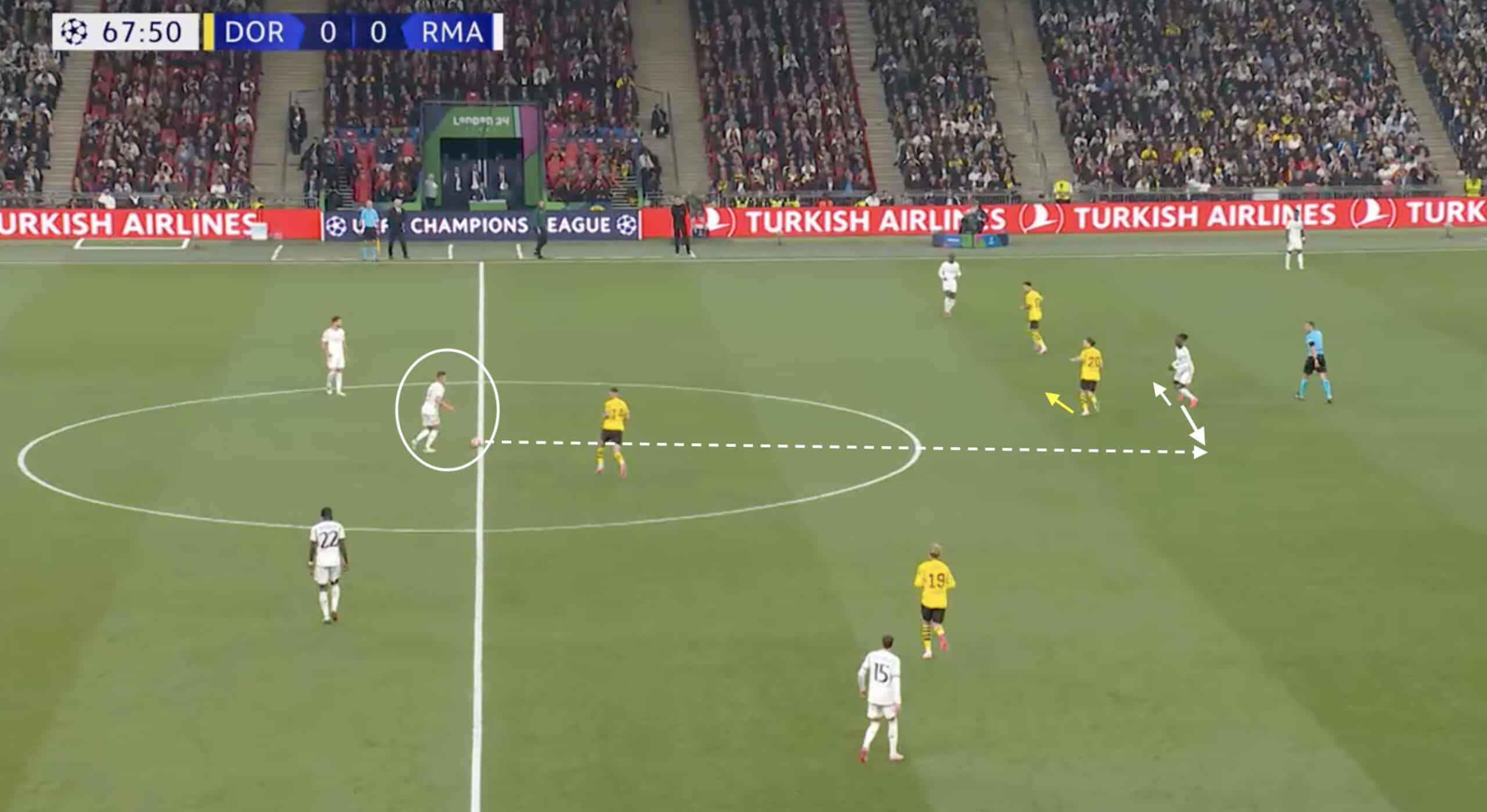
His vision was a huge factor in Real Madrid’s ability to move the ball as high up the pitch and as quickly as possible — something that has been lacking from their game since his departure.
Kroos was by far and away the most successful long passer in La Liga last campaign, having completed 13.75 long passes per 90 with an important 2.43 switches per match.
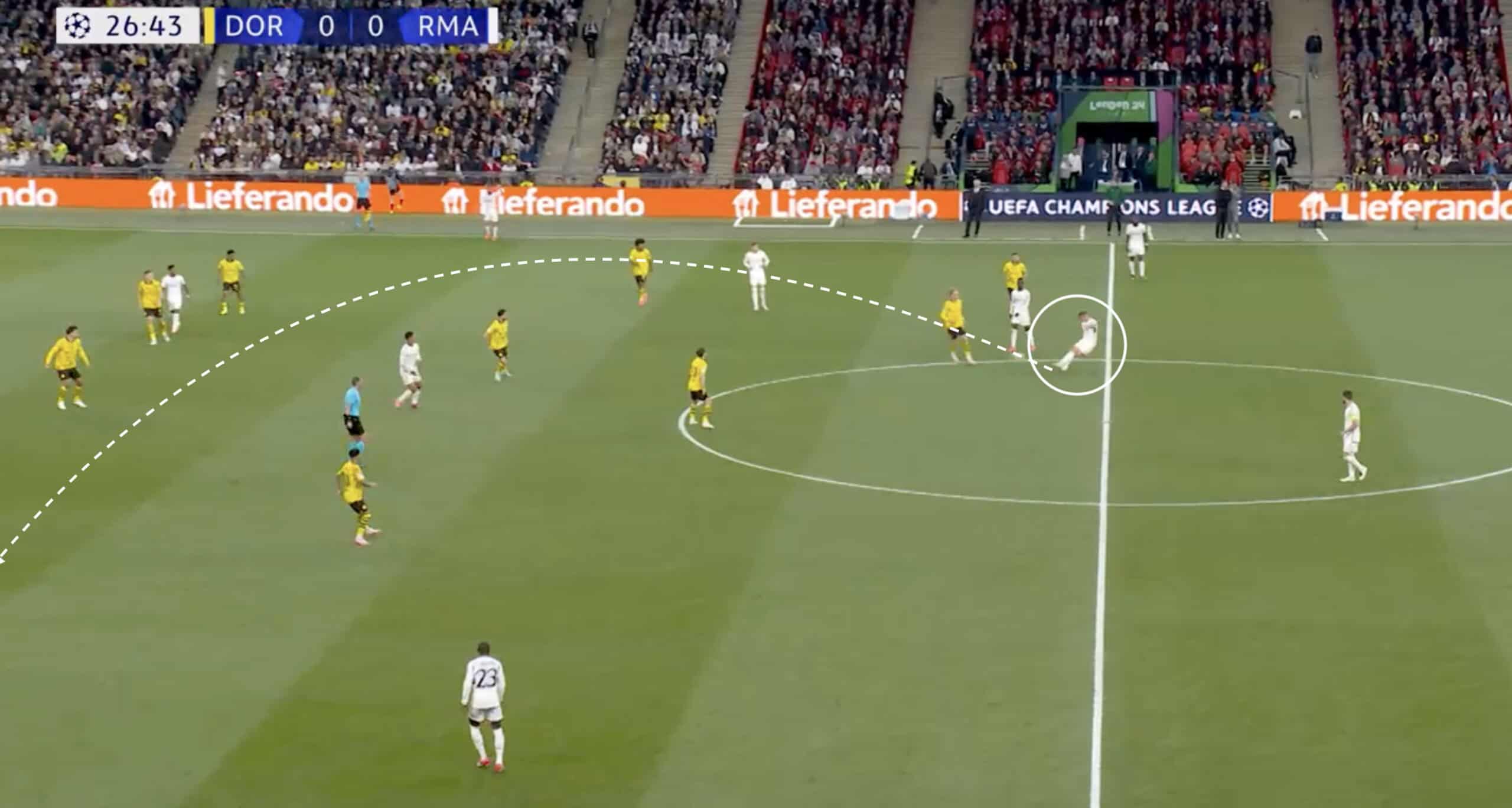
This subsequently allowed Real Madrid to develop a huge preconceived route to goal, with Kroos being able to pick out their impactful wingers on either flank.
They switched play at pace, with the opposition defence still reeling from Madrid’s effective overloads.
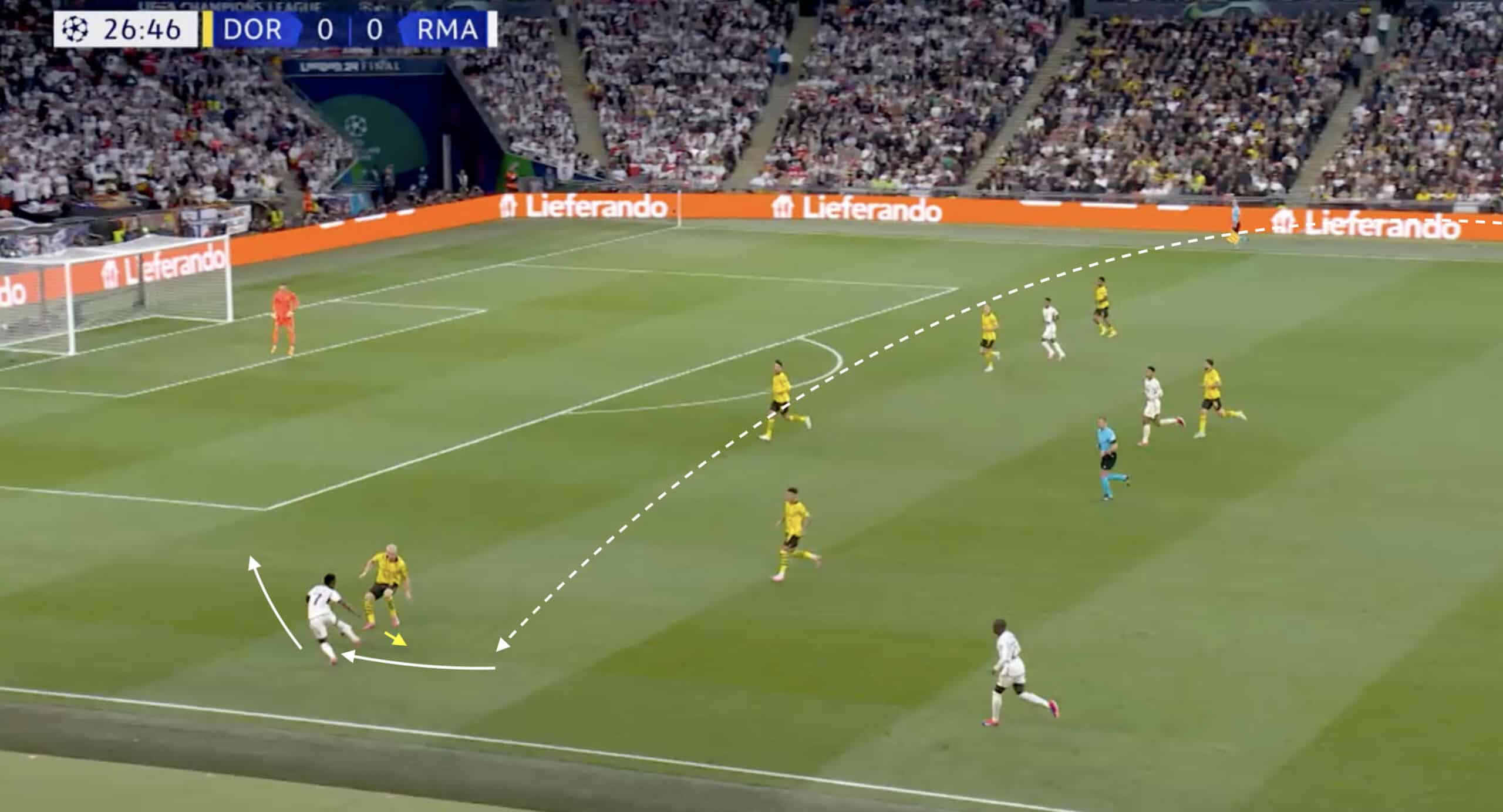
Reading about Kroos’ impressive qualities provokes discussion about how Madrid has reacted to his loss and how the current crop of their midfield orchestrators have looked to either emulate his brilliance or even adapt their methods to support some new personnel.
Carlo Ancelotti’s Tactical Evolution
The introduction of the eagerly-anticipated Kylian Mbappé has almost forced the adaptation of Carlo Ancelotti coaching style to redefine the Real Madrid formation in 2024, both in and out of possession, and he has been fairly honest about the fact that these changes have come due to necessity rather than necessarily a desire to switch.
Mbappé has formed a front three with the Brazilian duo of Rodrygo and Vinícius Jr., forcing the subsequent midfield trio behind them to be much more mobile and engaged due to the diminishing defensive support from their initial pressors.
This has impacted the roles of both Bellingham and Valverde, with the Englishman in particular often operating in a much more retreated position within the left half-space, which has contradicted his manager’s desire for Bellingham to be as close to the penalty area as possible.
When it comes to their out-of-possession play, this is when we begin to see Carlo Ancelotti manager style retreat into a much more flat 4-4-2 without the ball, with Bellingham shifting across to the left flank and Rodrygo assuming more of a defensive role on the right wing.
But this system needs a much more cooperative midfield than Madrid has been displaying.
There is a huge disconnect between the lines, and alarming amounts of space are forming for their opposition.
Last week, when addressing Real Sociedad’s early season form, I mentioned the amount of time and space Real Madrid had given Martín Zubimendi to dictate proceedings as the single pivot.
The following example highlights how their high-pressing efforts have looked disjointed without the natural calming presence that is Toni Kroos.
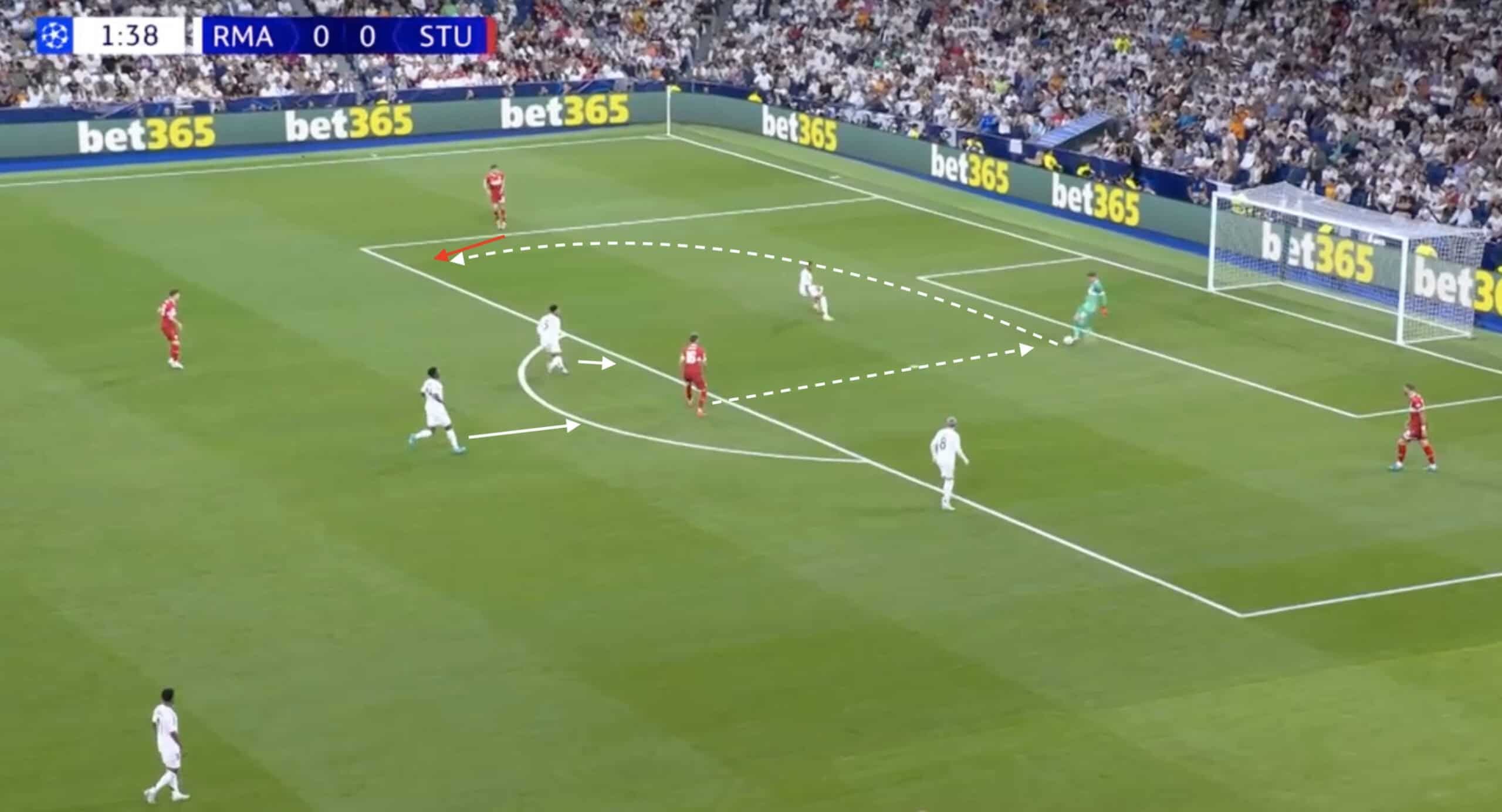
Stuttgart took advantage of both Tchouaméni and Valverde pressing high from the base of midfield and were swiftly able to breach the Madrid resistance in just a handful of passes, with limited resistance when breaking into open space—ultimately resulting in a dangerous opportunity within the Madrid box.
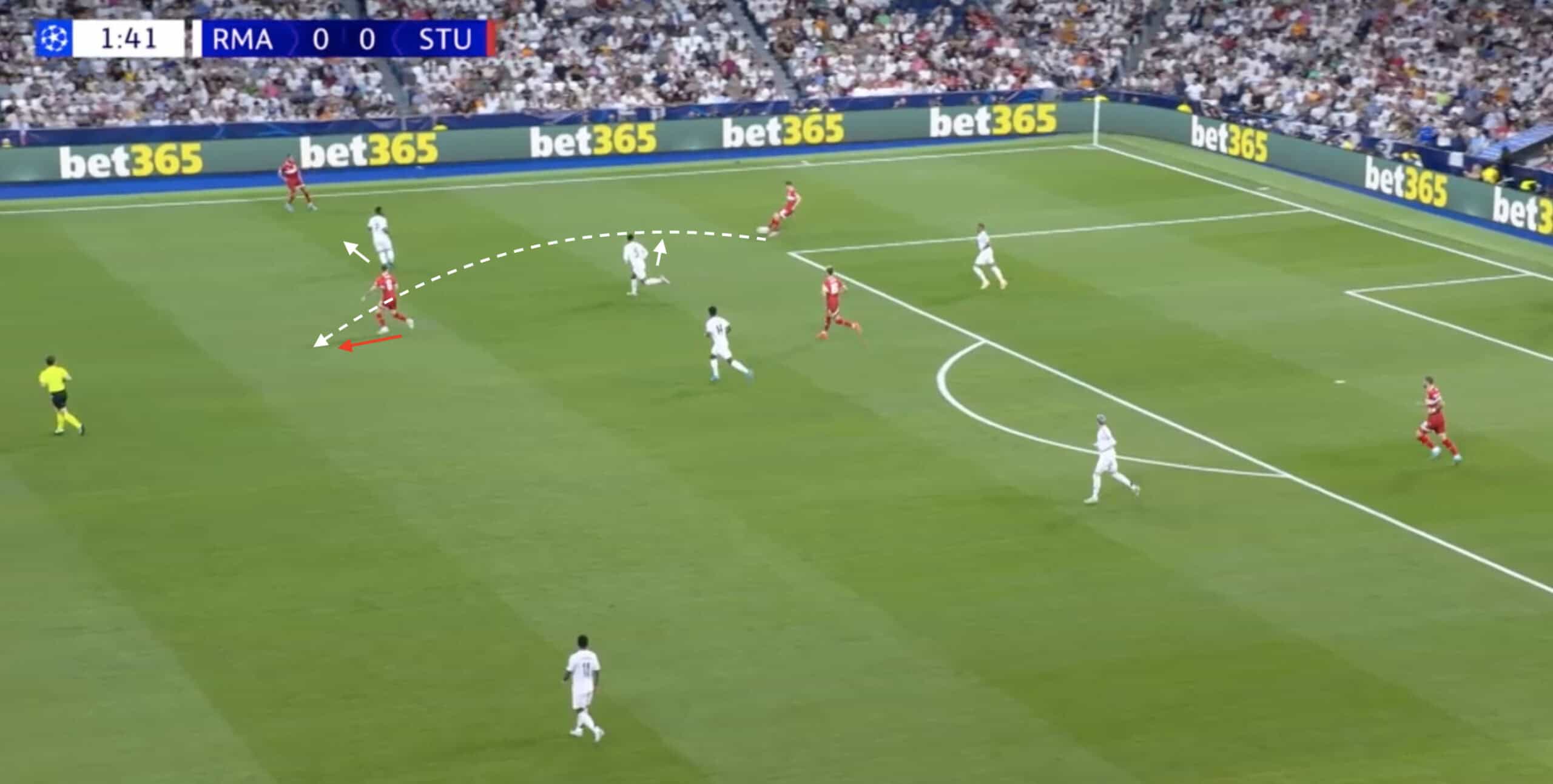
Real Madrid’s Build-Up Blues
Despite an unbeaten start to the 2024/25 season for Carlo Ancelotti’s men, Los Blancos fans have grown frustrated at times with their team’s lack of mobility and invention in midfield.
It would appear as though these issues have stemmed from the transitional period in which Madrid have experimented with their new stand-out ball progressor, which has had some detrimental effects on both their offensive strength, but also their ability to maintain possession when pressed high.
Madrid have also struggled with the absence of both Camavinga and Bellingham for large parts of this 2024/25 season, two midfielders who can offer that dramatically important link between defence and attack, leading Ancelotti style of play to change his approach to ball progression.
In the early moments of the campaign, we have seen Madrid focus much more on a direct style of passing, targeting the mobility of their attackers and their ability to vertically stretch the opposition.
It has been met with varied success, but it appears that it can be much more profitable when paired with a faster tempo to catch out the opposition defenders, something which is not always the case when attempting this style of play from the back.
Our first example picks out the early moments of the second half against Mallorca.
We see a lack of movement from the initial phase of Madrid’s build-up, forcing Courtois to look long and inevitably cede possession.
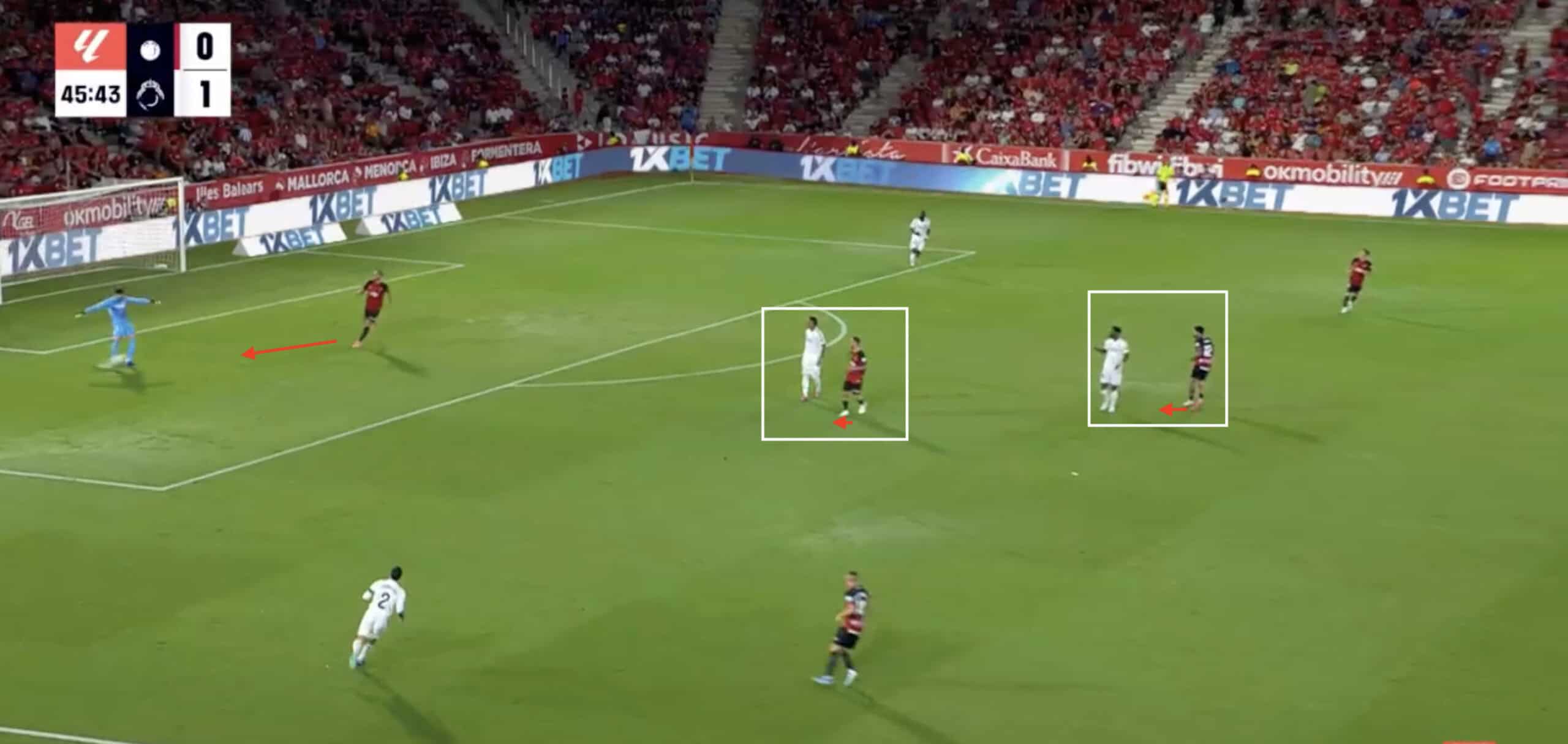
The Madrid attackers’ method of attack seems to falter when their opposition is much more reserved in their defensive structure and depth.
This example also magnifies the disconnect between the Madrid attackers, who are far too spaced out to effectively contest loose balls or anticipate potential knockdowns.
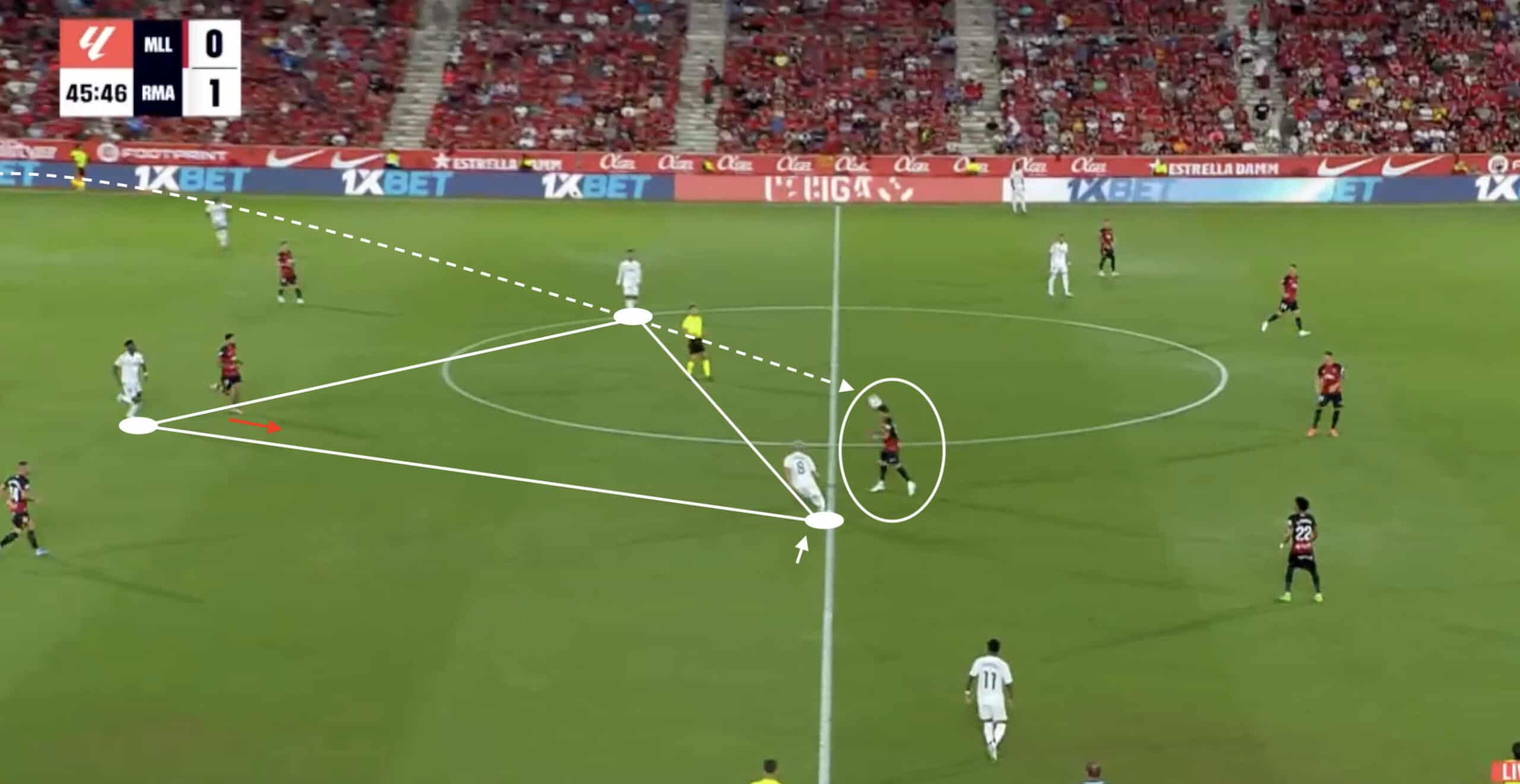
Where Madrid have seen success is when combining their direct style with quick ball circulation to beat an initial high press.
Stuttgart gave Madrid a stern test in the UCL, with the German side’s high pressing working wonders when Madrid was laboured in their initial build-up play. Multiple high turnovers forced subsequent attacking opportunities, which were inevitably wasted.
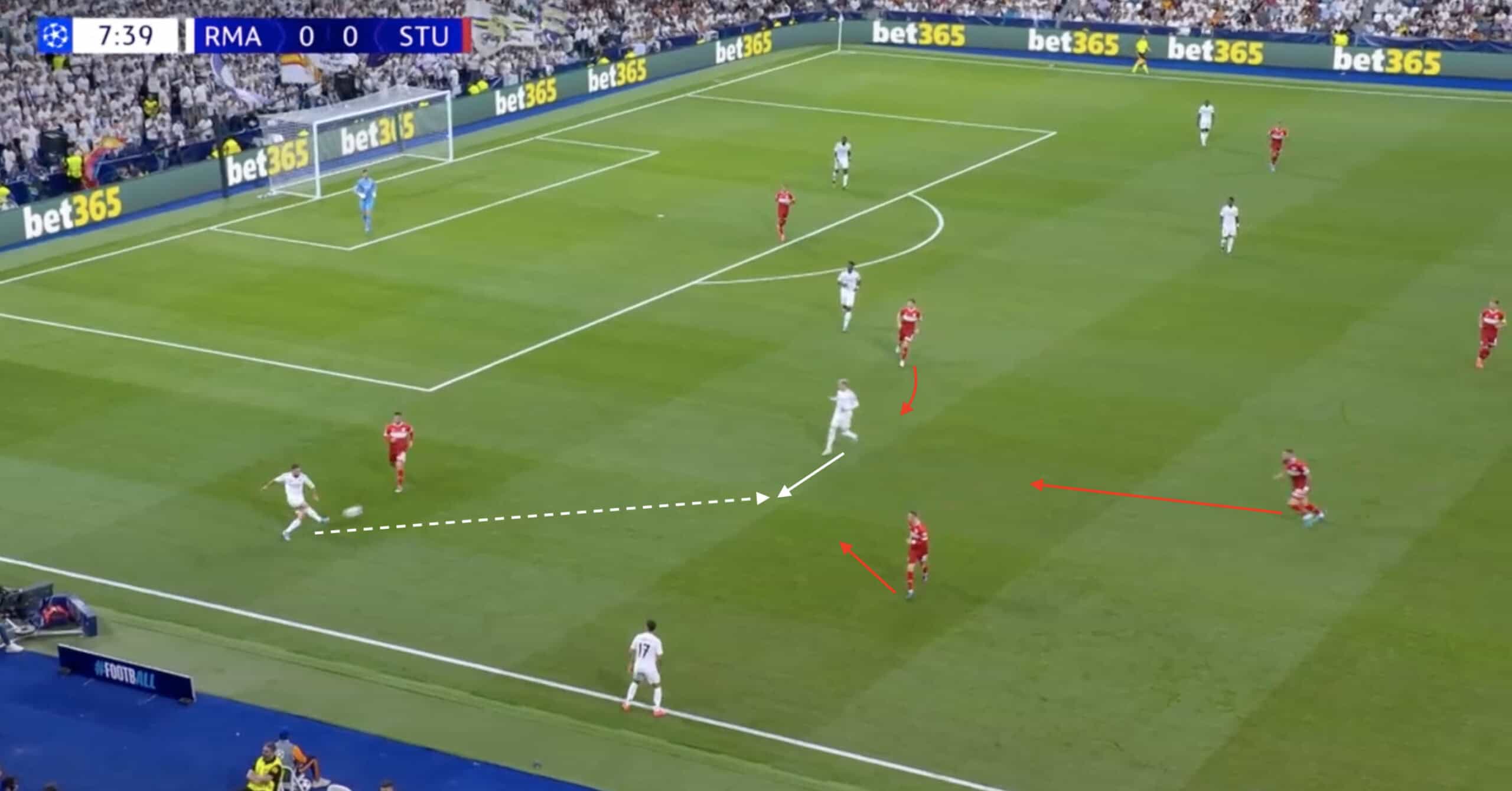
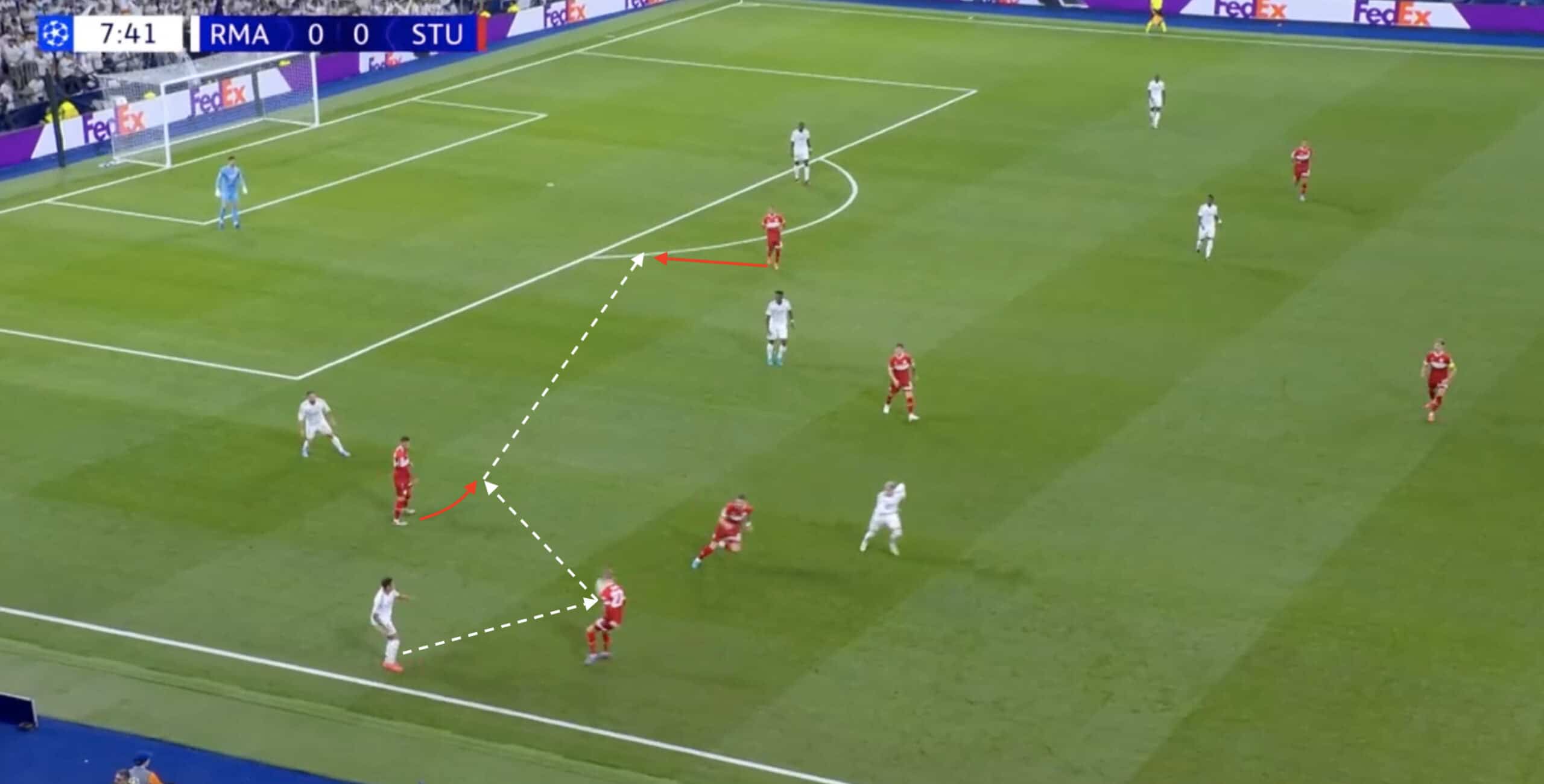
Madrid eventually broke the deadlock with Tchouaméni executing a perfectly-timed long through ball under immense pressure, finding Rodrygo in stride to race in behind the Stuttgart defence before squaring the ball to Mbappé.
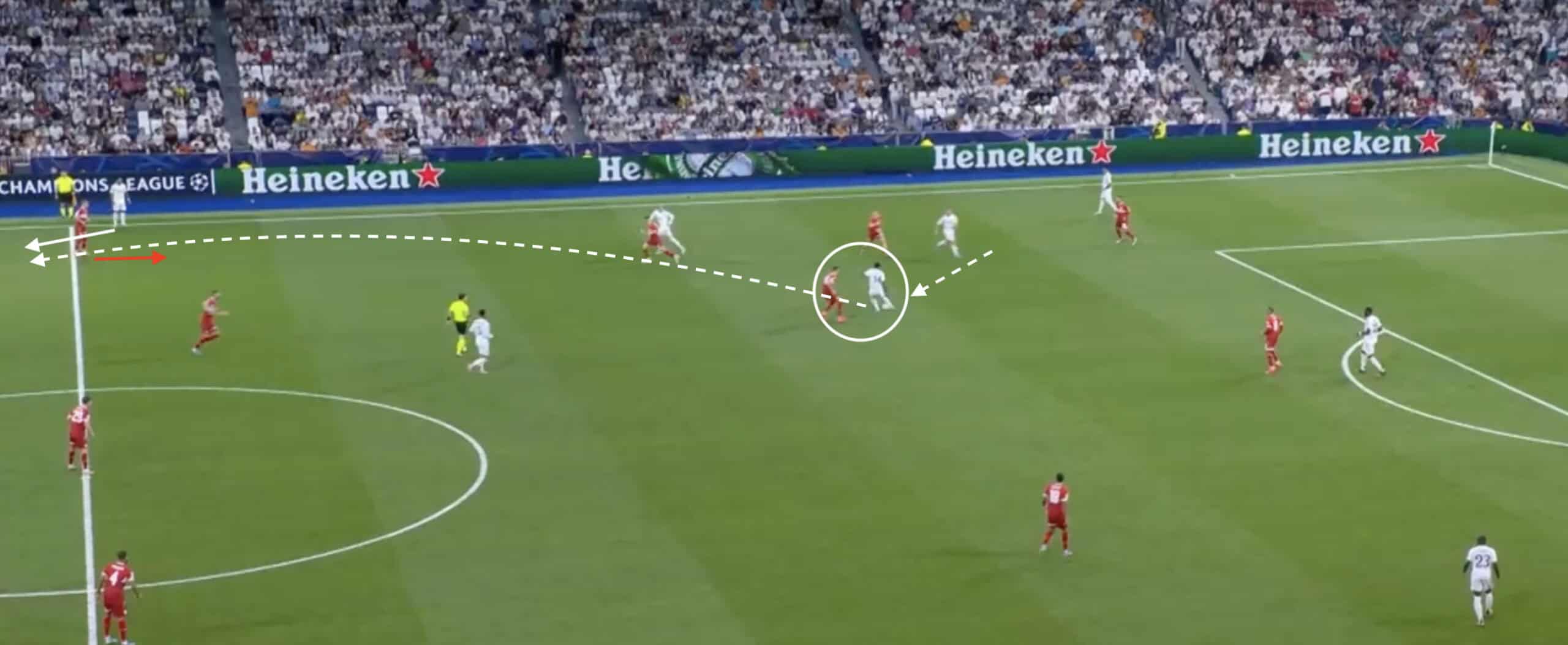
Madrid have also been able to partially emulate the effectiveness of Kroos’ long passing with Valverde over on the right flank, with the Uruguayan finding success when switching the ball across to the left wing- usually finding Vinícius isolated with enough space to be impactful in his 1v1 dribbling abilities.
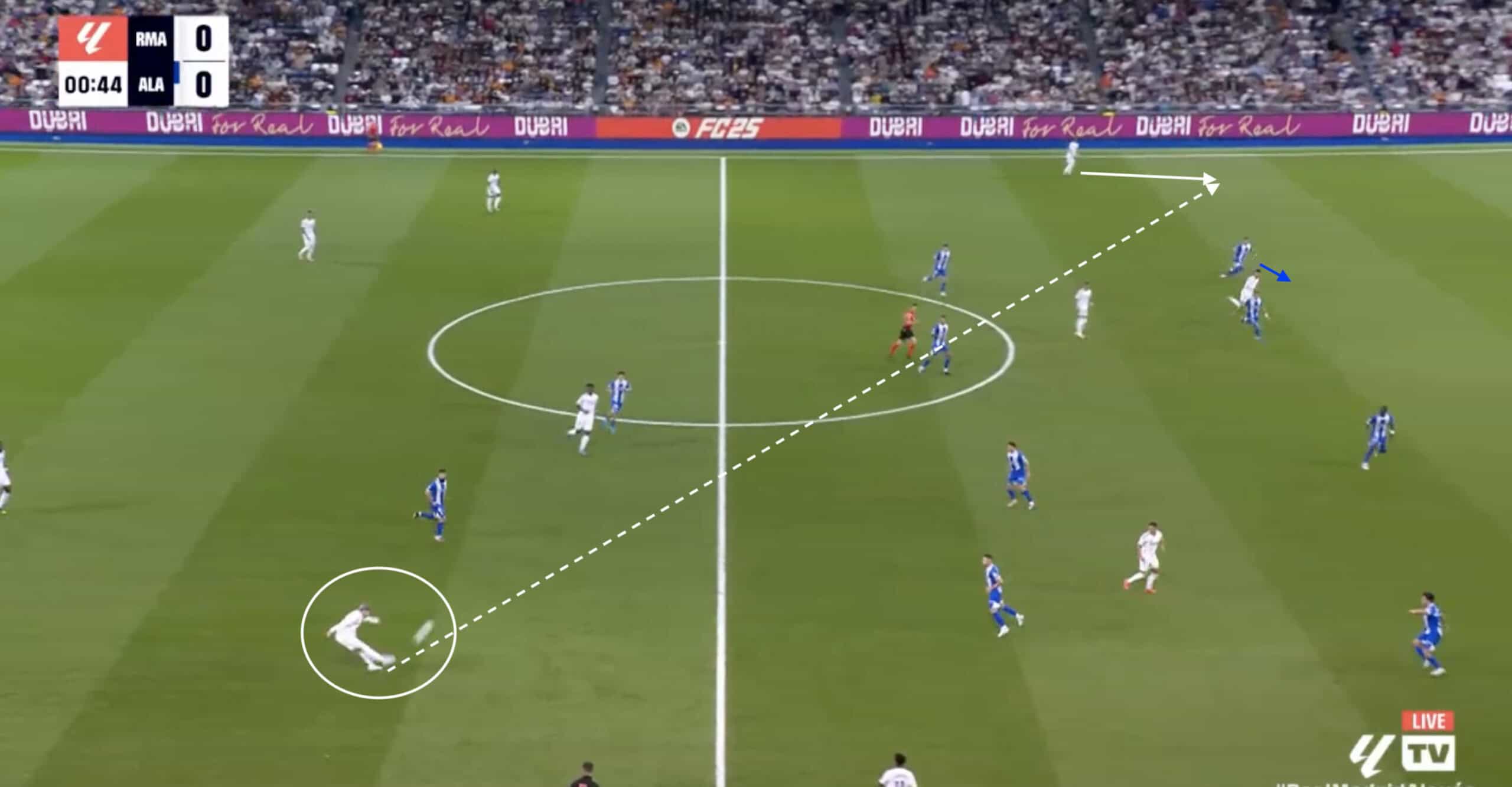
Real Madrid’s Attacking Influence
Speaking of Mbappé, it is also important to address the ways in which the Real Madrid attacking trio have looked to alleviate some of the issues associated with Madrid’s current progression woes.
Whilst we already mentioned the ways in which Ancelotti has aimed for his side to stretch the opposition by applying consistent pressure to the opposition’s defensive line, Mbappé has equally displayed important movement with his back to goal to offer important passing outlets between the lines.
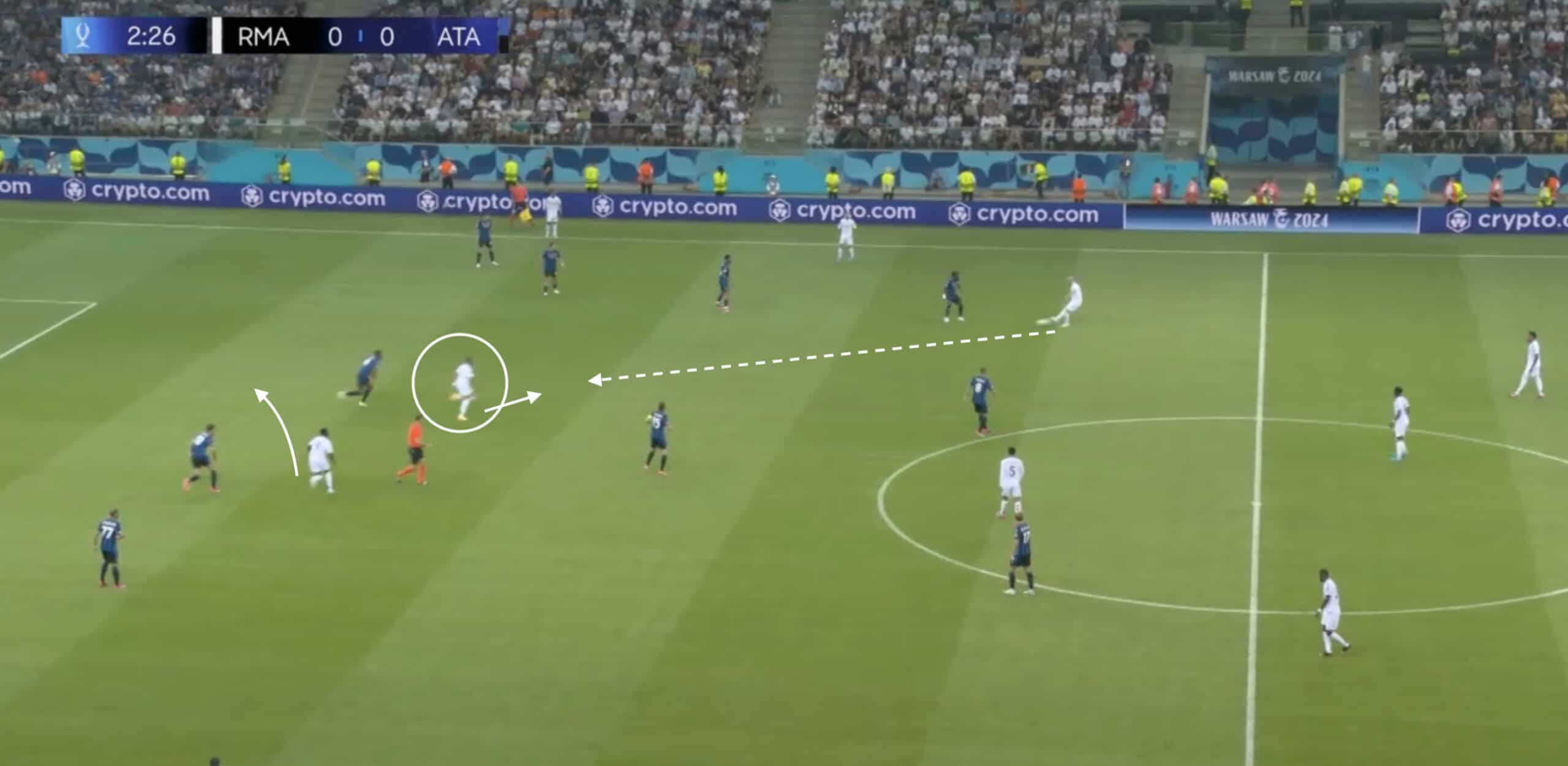
Even though it was not necessarily successful on this occasion, it highlights how the coordination between Mbappé and Vinícius can look to dismantle and pull apart a defensive line due to their explosive movement.
Another example of much deeper movement from the Madrid forwards was shown by Vinícius against Alavés, with the Brazilian vacating his centre-forward role in order to receive possession and provide a central passing outlet to help bypass the press out wide.
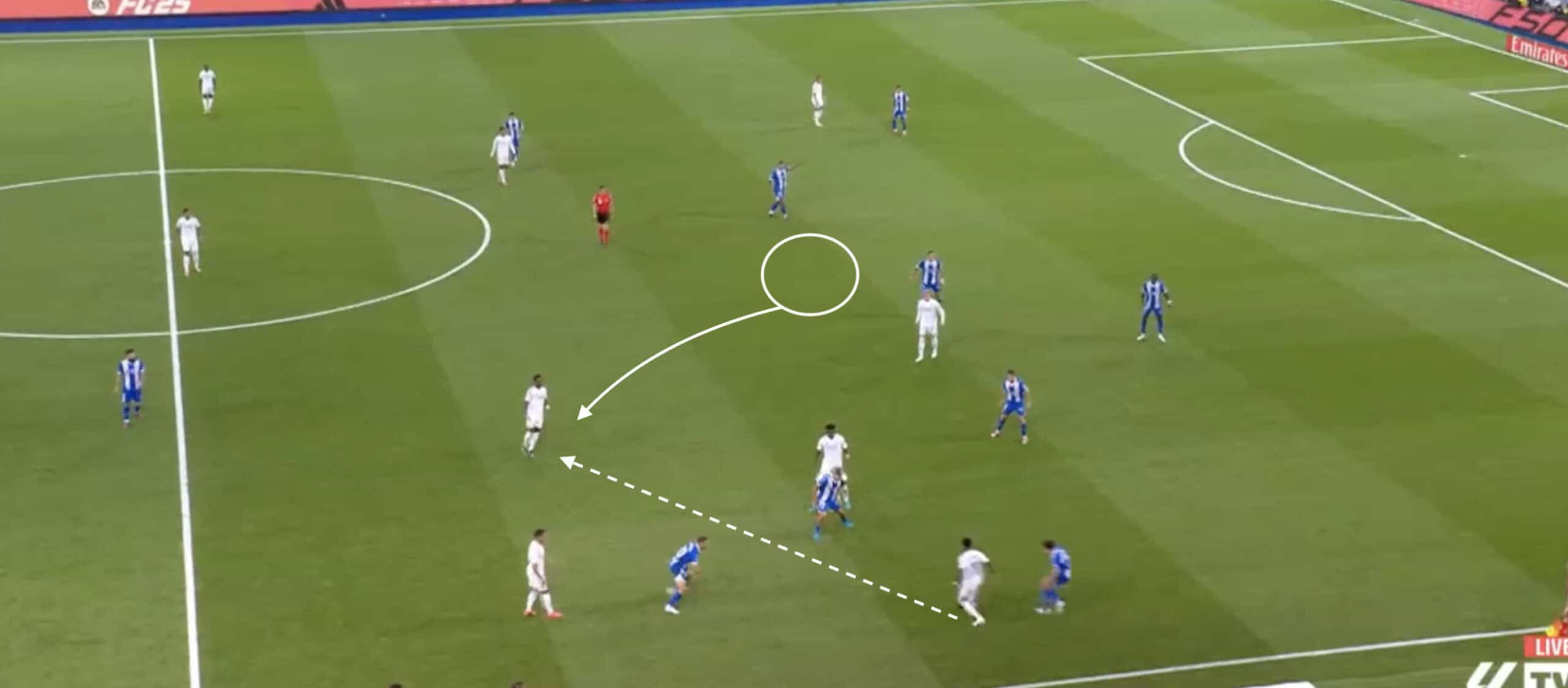
This allowed one of Madrid’s finest ball-carriers time on the ball, even emulating the aforementioned ‘Kroos position’ between the two central defenders before launching a high-tempo passing sequence through the middle of the pitch.
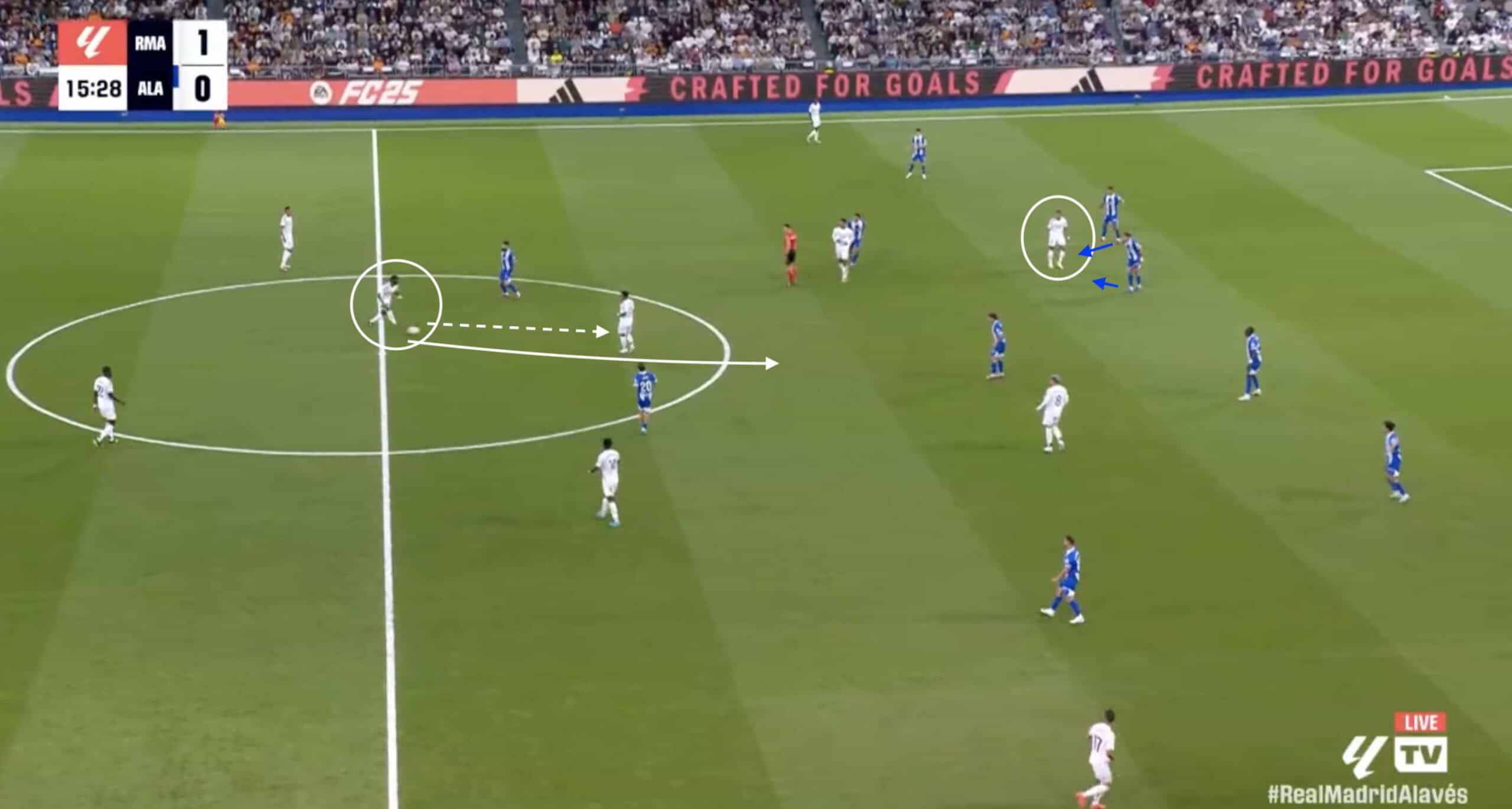
Although this brought about the necessary spark, which Madrid have lacked at times this season, Vinícius is generally much more influential when picking up the ball in the final third.
This move also allows Alavés to double up on Mbappé and stifle any threatening attack.
Examples like these have sparked debate amongst Madridistas about whether or not their side would benefit from some more structured and balanced forward play.
But for Ancelotti, the other problem would be that in no way would he want to put a cap on the attacking innovation and brilliance of some of the most dynamic elite forwards on the planet by morphing them into systematic, predictable forwards.
Conclusion
Real Madrid have always been a fascinating watch under Carlo Ancelotti, even more so in recent years when they have had to battle various issues and systemic weaknesses whilst still performing at the highest standard across Europe.
The loss of Toni Kross has undoubtedly had a lasting effect on their midfield balance and overall control in the early parts of this season.
But if there was any team in world football that you would expect to adapt to such issues, then Real Madrid would surely be at the top of your list.

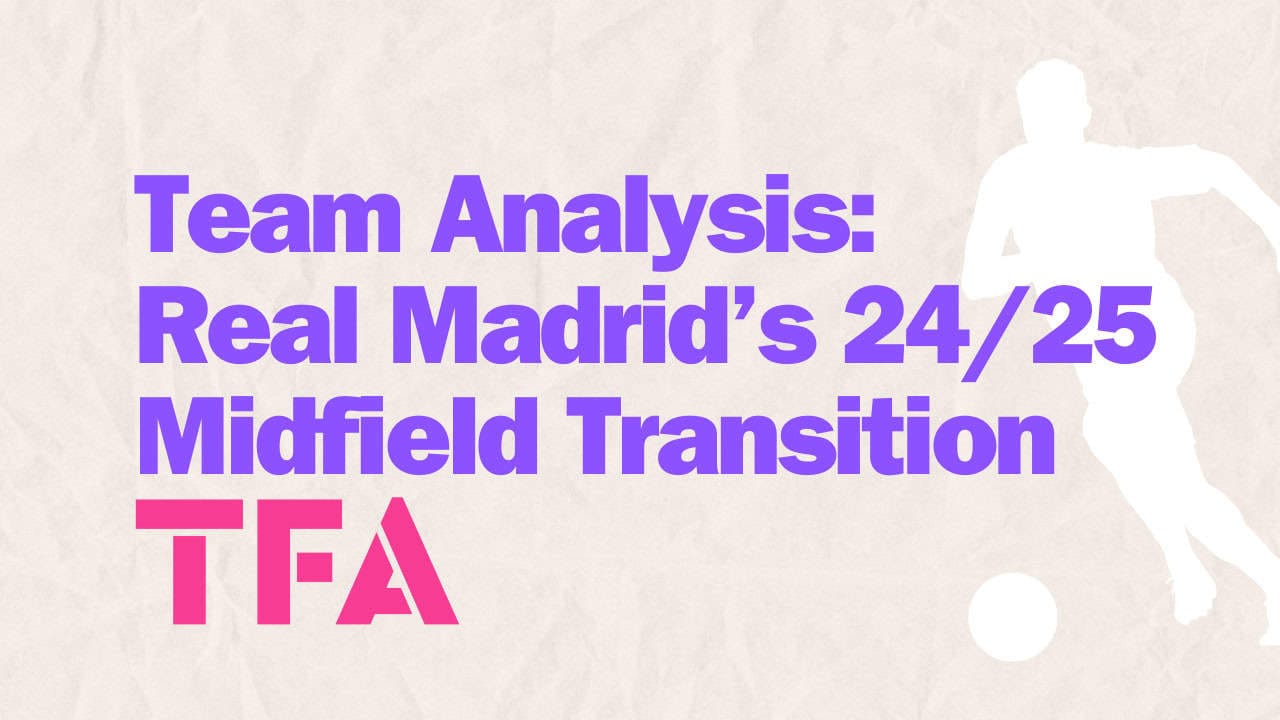



Comments